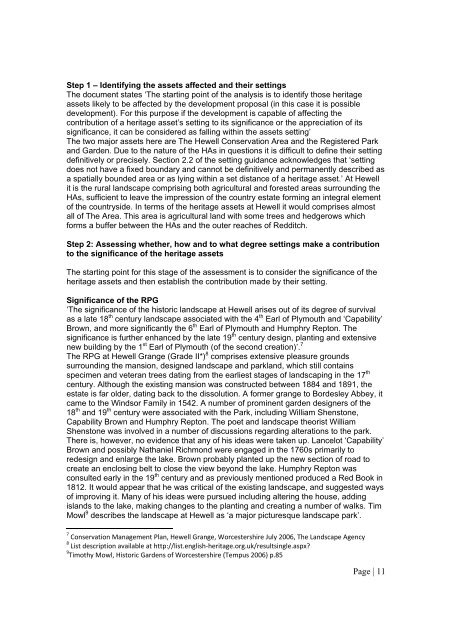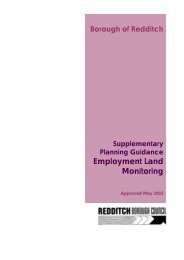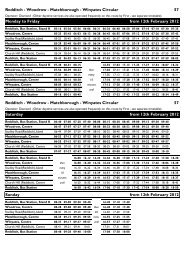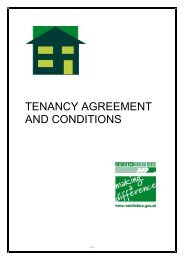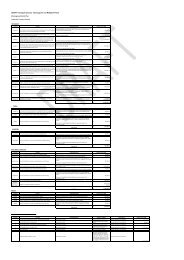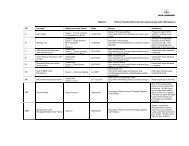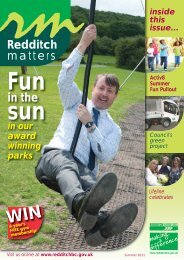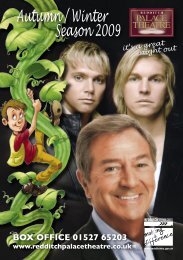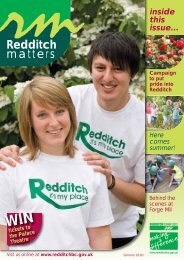Hewell Grange Estate - Setting of Heritage Assets Assessment
Hewell Grange Estate - Setting of Heritage Assets Assessment
Hewell Grange Estate - Setting of Heritage Assets Assessment
Create successful ePaper yourself
Turn your PDF publications into a flip-book with our unique Google optimized e-Paper software.
Step 1 – Identifying the assets affected and their settingsThe document states ‘The starting point <strong>of</strong> the analysis is to identify those heritageassets likely to be affected by the development proposal (in this case it is possibledevelopment). For this purpose if the development is capable <strong>of</strong> affecting thecontribution <strong>of</strong> a heritage asset’s setting to its significance or the appreciation <strong>of</strong> itssignificance, it can be considered as falling within the assets setting’The two major assets here are The <strong>Hewell</strong> Conservation Area and the Registered Parkand Garden. Due to the nature <strong>of</strong> the HAs in questions it is difficult to define their settingdefinitively or precisely. Section 2.2 <strong>of</strong> the setting guidance acknowledges that ‘settingdoes not have a fixed boundary and cannot be definitively and permanently described asa spatially bounded area or as lying within a set distance <strong>of</strong> a heritage asset.’ At <strong>Hewell</strong>it is the rural landscape comprising both agricultural and forested areas surrounding theHAs, sufficient to leave the impression <strong>of</strong> the country estate forming an integral element<strong>of</strong> the countryside. In terms <strong>of</strong> the heritage assets at <strong>Hewell</strong> it would comprises almostall <strong>of</strong> The Area. This area is agricultural land with some trees and hedgerows whichforms a buffer between the HAs and the outer reaches <strong>of</strong> Redditch.Step 2: Assessing whether, how and to what degree settings make a contributionto the significance <strong>of</strong> the heritage assetsThe starting point for this stage <strong>of</strong> the assessment is to consider the significance <strong>of</strong> theheritage assets and then establish the contribution made by their setting.Significance <strong>of</strong> the RPG‘The significance <strong>of</strong> the historic landscape at <strong>Hewell</strong> arises out <strong>of</strong> its degree <strong>of</strong> survivalas a late 18 th century landscape associated with the 4 th Earl <strong>of</strong> Plymouth and ‘Capability’Brown, and more significantly the 6 th Earl <strong>of</strong> Plymouth and Humphry Repton. Thesignificance is further enhanced by the late 19 th century design, planting and extensivenew building by the 1 st Earl <strong>of</strong> Plymouth (<strong>of</strong> the second creation)’. 7The RPG at <strong>Hewell</strong> <strong>Grange</strong> (Grade II*) 8 comprises extensive pleasure groundssurrounding the mansion, designed landscape and parkland, which still containsspecimen and veteran trees dating from the earliest stages <strong>of</strong> landscaping in the 17 thcentury. Although the existing mansion was constructed between 1884 and 1891, theestate is far older, dating back to the dissolution. A former grange to Bordesley Abbey, itcame to the Windsor Family in 1542. A number <strong>of</strong> prominent garden designers <strong>of</strong> the18 th and 19 th century were associated with the Park, including William Shenstone,Capability Brown and Humphry Repton. The poet and landscape theorist WilliamShenstone was involved in a number <strong>of</strong> discussions regarding alterations to the park.There is, however, no evidence that any <strong>of</strong> his ideas were taken up. Lancelot ‘Capability’Brown and possibly Nathaniel Richmond were engaged in the 1760s primarily toredesign and enlarge the lake. Brown probably planted up the new section <strong>of</strong> road tocreate an enclosing belt to close the view beyond the lake. Humphry Repton wasconsulted early in the 19 th century and as previously mentioned produced a Red Book in1812. It would appear that he was critical <strong>of</strong> the existing landscape, and suggested ways<strong>of</strong> improving it. Many <strong>of</strong> his ideas were pursued including altering the house, addingislands to the lake, making changes to the planting and creating a number <strong>of</strong> walks. TimMowl 9 describes the landscape at <strong>Hewell</strong> as ‘a major picturesque landscape park’.7 Conservation Management Plan, <strong>Hewell</strong> <strong>Grange</strong>, Worcestershire July 2006, The Landscape Agency8 List description available at http://list.english‐heritage.org.uk/resultsingle.aspx?9 Timothy Mowl, Historic Gardens <strong>of</strong> Worcestershire (Tempus 2006) p.85Page | 11


